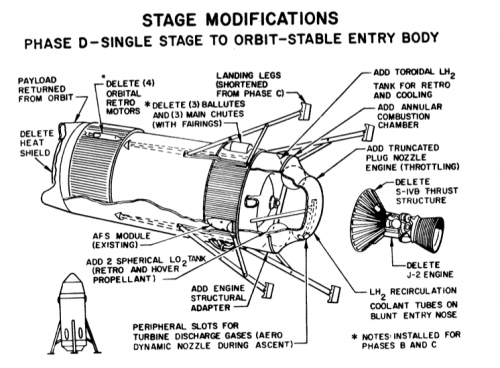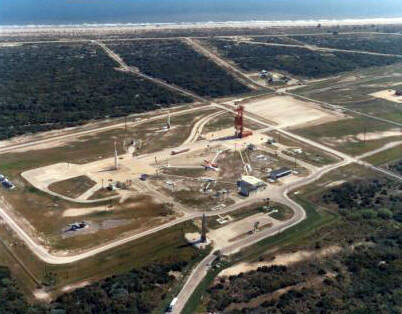That would be wrong. It was cheaper. The Titan had an existing production line. From 1969 to 1974, Titan IIIB flew 25 times and Titan IIIC/D 16 times using 4 pads. Saturn IB only flew 3 times (Saturn V 6 times). During the Titan IIIE of 6 launches (1977-1977), Titan IIIB flew 12 times and Titan IIIC/D 14 times using 3 pads, Saturn only flew once.
Eh that's exactly what I mean, so thanks for that

The Titan 'launch vehicles' were not standard Titans and had to be made on specifically designed (and rebuilt) lines and that was before costs went up when they stopped being operational missiles but that costs was still being 'hidden' by being "operational production models' which they weren't. Yes the Air Force used a lot of "accounting methods" to keep Titan "cheap" until they couldn't anymore and the price skyrocketed.
Saturn, especially Saturn 1 was from the start aimed at being as cheap as possible while being the most powerful booster possible for the US during the period. And that carried through even though they made a decisions to use a very expensive upper stage which is what cost the most. (And understanding this they were planning on making cheaper S-IV stages which would have been pretty simple to do)
Only one Titan pad and 2 launch platforms needed Centaur mods. Another Milkstool would be needed and the two Saturn IB Mobile Launchers would require Centaur mods and possibly another firing room would need Saturn IB mods.
So? You say Titan needed only a few pads and mods but to fly the proposed Apollo missions and would quickly have reached limits to both the existing pads and infrastructure. Part of the price of doing business. Titan would have required lots of changes to the Apollo systems and vehicles which would have significantly impact the prices as well.
The USAF didn't care if NASA used Titan.
Yes they did, they were VERY interested in NASA using Titan because they could continue to hide the actual prices by charging things to NASA instead. They also hoped to get into flying their own manned missions and into a higher place on the Space Launch food chain. They pretty much made no bones about it. They were aiming to have NASA pay for most of the changes and upgrades to the Titan infrastructure, (which NASA did end up helping with because of using Titan as a launcher themselves) NASA paid for all the upgrades to make the Titan LV's used for Gemini which were thing that the Air Force knew could be problems but were unwilling to pay for out of their budget so the precedent was already in place.
Again, not true. S-IVB was not cheaper than anything on the Titan (or any two things for than matter). And just in case, there is no misunderstanding, it was not Saturn IB vs Titan IIIE (Centaur). It was Saturn IB Centaur vs Titan IIIE (Centaur)
Actually no, the Centaur was supposed to be used on future unmanned Saturn missions, the S-IVB in the form of a "cheap Chinese copy" for manned flights. The Titan IIIE was go be an issue even with the Centaur added. Adding SRBs to the Titan required raised the prices of Titan even more (and was a lot harder to hide) because the SRB Titans no longer shared production "commonality" with the historic existing production lines. Meanwhile adding them to the Saturn 1 was essentially going to be some equipment changes and system re-routing because the basic structure to handle them was already built in to the booster.
You seem fixated on the S-IVB which we've already established was known to be expensive and fixes for the problem already in work if things had gone forward with things.
No, there was no west coast pad for Saturn IB. And upgraded Saturn IB Centaur would have been more expensive than Titan IV, still with no west coast capability.
Uh never said there was, I said the Air Force was against using Saturn 1 and used the cost and difficulty of having to put one there to defend using the Titan which had existing pads. It was just another argument aimed at making Titan "look" better as a deal. (There was some real worry about the USAF and NASA being forced due to budget cutting of having to go with one or the other. The Air Force wanted all the arguments they could get to NOT have to use Saturn. The Air Force remembered quite well being forced to go with the Titan rather than the new system of the Space Launching System they had really wanted for the space launch mission)
In the end it was pretty clear that the standard Air Force and NASA "missions" were not going to be able to be handled by a single launch vehicle and the pressure to consolidate eased off. NASA went with the Shuttle which the Air Force (again) didn't really want but went along in the hopes of getting either their own Shuttles (not going to happen) or included on missions but didn't really start preparing to use the Shuttle until they actually read the fine print on the NASA Shuttle program paperwork where NASA had proposed and Congress had accepted that in the end ALL government payloads would end up flying on the Shuttle and that would include anything that could be flown on Titan.

Randy



